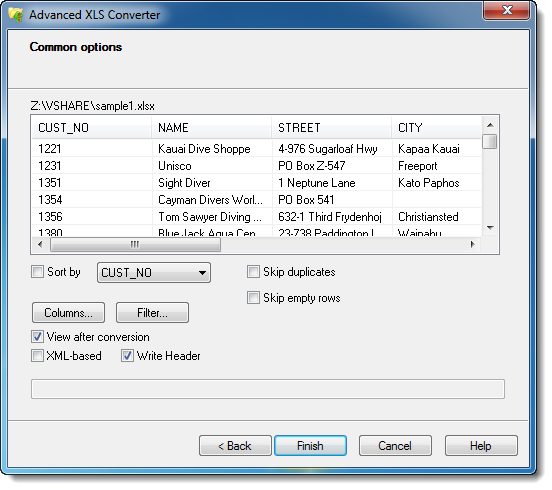Command To Open .xlsx File In Unix
I need to convert '.xlsx' file to '.xls' using shell command. At my work we are currently using xlsx2csv command but now requirement has been changed and we need to.
Attention, Internet Explorer User Announcement: Jive has discontinued support for Internet Explorer 7 and below. In order to provide the best platform for continued innovation, Jive no longer supports Internet Explorer 7. Jive will not function with this version of Internet Explorer. Please consider upgrading to a more recent version of Internet Explorer, or trying another browser such as Firefox, Safari, or Google Chrome. (Please remember to honor your company's IT policies before installing new software!) • • • •.


This is a wonderful solution, because my exact problem is to do this conversion from a batch file, so i think i can write this code in a text file, and run the command to open it from a batch file, right? - 2nd problem is, i am not sure about this line in the code: WScript.Echo 'Error! Please specify the source path and the destination.
Usage: XlsToCsv SourcePath.xls Destination.csv' suppose i have a.xls file named ' employees ', and i want to convert it and modify the line please, and tell me if i have to put the ( ' ) quotes or not. Thank you so much. If you are more comfortable writing a macro routine inside Excel where you can test portions of the code, you can also use the workbook's Private Sub Workbook_Open() to open Excel from within your batch and run a macro.
The last line of the macro would shut down Excel. The actual differences in working code between a Visual Basic Script (VBS) and Excel's Visual Basic for Applications (VBA) are very slight.
The primary difference is that the VBS needs to construct an Excel application object while Excel (by definition) already has itself to use in this regard. Asterisk Call File Example. You should be able to write the majority of code within Excel and port it over to a VBS script inside a WScript Excel application object when you are comfortable with the results. On a related note, if you use a lot of batch and otherwise scripted routines from a command line, I would strongly recommend that you start getting involved with PowerShell. If you keep on a path to automate repetitive events through the command line, the additional functionality of PowerShell will definitely come in handy. Better to start the learning curve sooner than later. Have a closer look at what the actual name of the file you created was.



